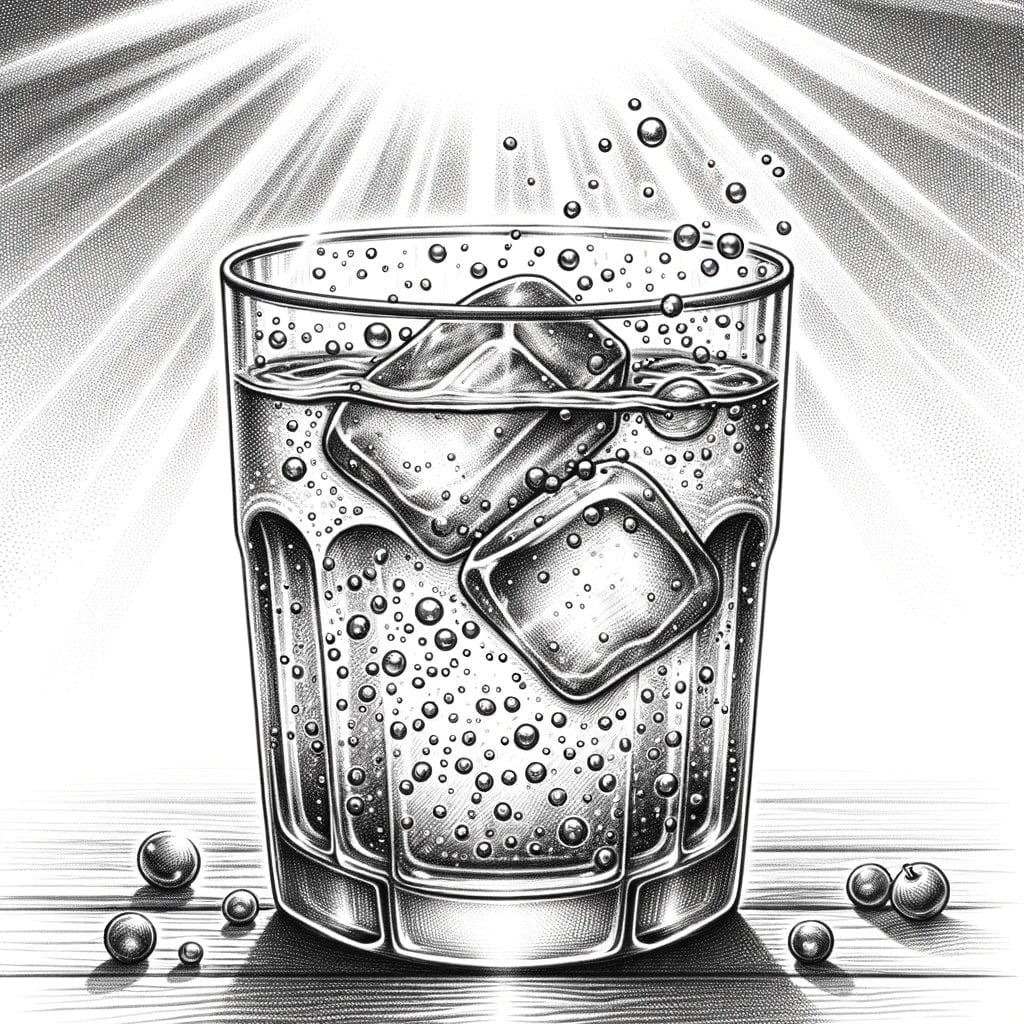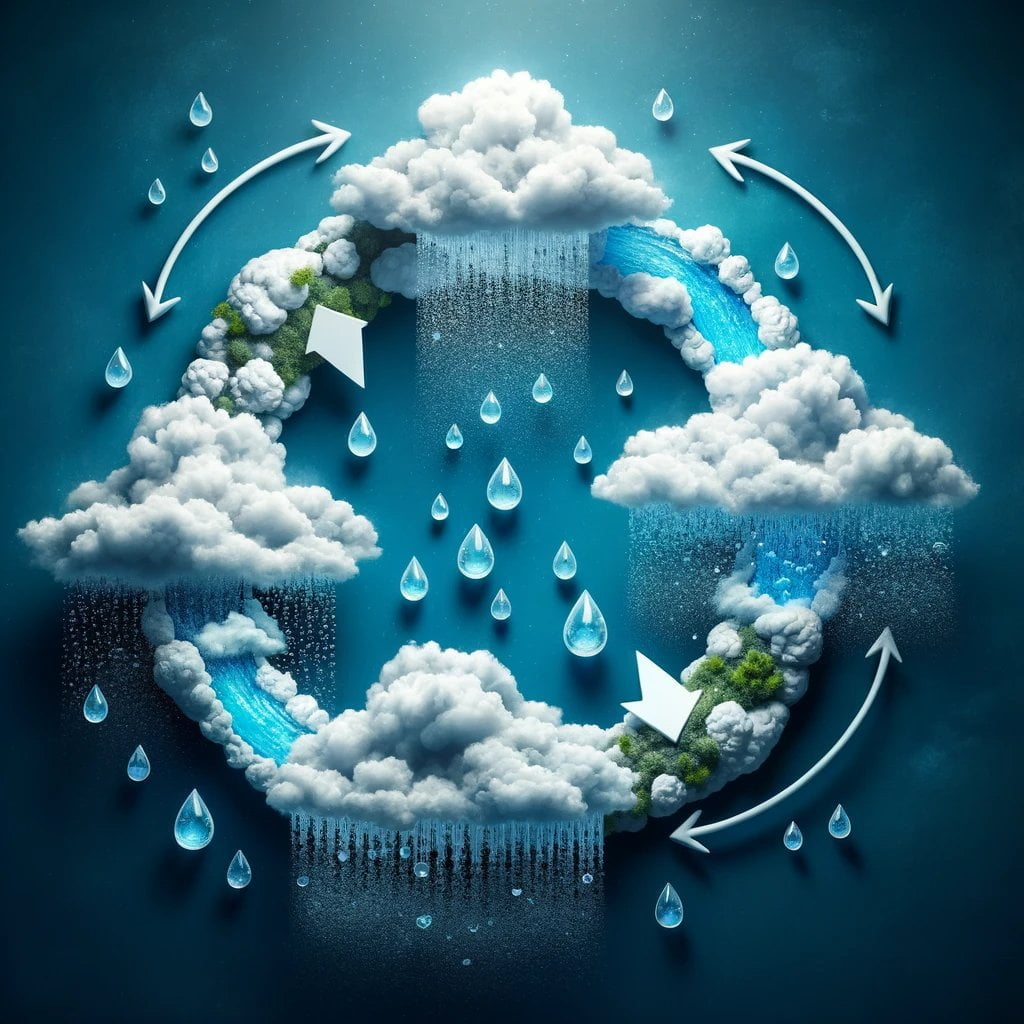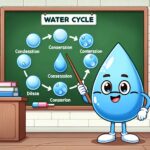Are you prepared to explore the intriguing realm of condensation? Those with an interest in the scientific principles governing the condensation of water vapor into liquid particles are in for a treat. Two astoundingly enthralling facts regarding condensation will be revealed in this article. As a result of its influence on the structures we construct and its mesmerizing effects on nature, condensation is a phenomenon worthy of investigation. Prepare to, therefore, uncover the enigmatic nature of condensation.
Facts About Condensation
Condensation, an intriguing natural phenomenon, is the transformation of water vapor from a gaseous to a liquid or crystallized state. By illuminating some thought-provoking facts regarding condensation, we can decipher its enigmas and comprehend the effects it has on our environment.
1. The Dew Point: The Threshold Temperature for Condensation
The dew point, which denotes the temperature at which water vapor in the atmosphere transforms into liquid, is a critical element in the process of condensation. The air reaches its saturation point as it cools, resulting in the transformation of water vapor into minuscule droplets that adhere to surfaces. Fog on a chilly morning or the appearance of mist on grass are prime examples of this captivating process.
The process of condensation takes place when the air temperature reaches its dew point, signaling the change from water vapor to liquid particles.
2. Cloud Formation: A Magnificent Exhibition of Nature
Furthermore, condensation is a critical factor in the development of clouds. As balmy and humid air ascends, it comes into contact with lower-temperature conditions in the upper atmosphere. As a result of these temperature differences, water vapor condenses into liquid droplets, which then compose clouds. The convergence of accumulating particles produces the mesmerizing configurations and dimensions observed from above.
Miraculous clouds are formed when condensation transforms vaporous water vapor into the vivid aggregations that we behold in the atmosphere.
3. Reversible Nature: An Exploration of Droplets and Vapor
Every phase transition involving condensation can be reversed. Evaporation is the process by which liquid water can transform back into vapor as the temperature increases. Constant cycles of interaction between condensation and evaporation govern a multitude of natural processes, including precipitation and the regulation of the Earth’s water balance.
By means of their eternal cycle, condensation grants us the opportunity to observe the profound interplay between liquid particles and imperceptible vapor as they cycle back and forth.
4. Condensation Measurement: Revealing the Invisible
In order to measure and track condensation, researchers depend on specialized equipment, including hygrometers and psychrometers. These instruments quantify fluctuations in temperature and humidity, facilitating a more profound comprehension of the way moisture operates in diverse environments. Through the interpretation of condensation’s concealed language, they aid in the comprehension of its environmental ramifications.
Scientists employ sophisticated instruments to decipher the complex patterns of condensation, gradually revealing its secrets drop by drop.
5. Varied Applications: From Organic Harvesting to Chilled Delights
There are practical applications for condensation in a variety of fields. Condensation is utilized in the field of refrigeration to extract heat from refrigerant gases, thereby enabling the enjoyment of chilled beverages during extremely hot days. Condensation is utilized in processes such as distillation to separate substances via temperature differentials. In addition, novel methodologies such as fog harvesting leverage condensation processes to acquire water in arid geographical areas.
Condensation’s multifunctionality positively impacts various aspects of our lives, such as supplying water in arid regions and alleviating our thirst with cold beverages.
6. A Natural Lifesaver: Adaptations of Nature
Certain organisms and fauna have undergone evolutionary adaptations to utilize condensation as an essential water resource. Particular cacti and fog-basking beetles are desert-dwelling organisms that have developed extraordinary adaptations that allow them to absorb moisture from the air. By employing condensation, they demonstrate the resourcefulness of natural organisms in enduring hostile conditions.
The remarkable phenomena of nature serve as evidence that condensation can function as a vital resource, supporting life in environments that may appear to be hostile.
By revealing these intriguing facts regarding condensation, we develop a more profound understanding of the influence it has on the formation of our planet. Condensation, an intriguing force that imparts marvels to both natural and constructed environments, is responsible for the formation of mesmerizing clouds and numerous innovative applications.
Constraints are an intriguing natural occurrence that is ubiquitous. Unbeknownst to you, condensation is an essential component of the water cycle. Those interested in learning more should peruse the following ten fascinating facts regarding condensation: This article will impart valuable insights into various topics, including the effect condensation has on weather patterns and the mesmerizing transformation of water vapor into liquid particles. So, why wait? Dive into the world of condensation by clicking this link: 10 Interesting Facts About Condensation
While we’re discussing condensation, let’s examine some interesting information regarding the condensation water cycle. Have you ever pondered the process by which water evaporates to become a liquid in the atmosphere? Or the function condensation serves in the formation of clouds and precipitation. This article will provide additional answers to these inquiries. Prepare to be amazed by the intricate workings of the water cycle by clicking here: Fun Facts About the Condensation Water Cycle.
Let us now examine the science of condensation in greater detail. Condensation reactions constitute a fundamental aspect of the chemical discipline, correct? These chemical reactions are essential for the development of a wide range of compounds and polymers. Those with a curiosity for this subject matter should examine the following fascinating information regarding condensation reactions: Click on the following link to uncover the secrets of this fascinating chemical process: Facts About Condensation Reactions
Another intriguing facet of chemistry is condensation polymerization, which is in addition to condensation reactions. The formation of complex polymers via the elimination of small molecules, such as water, is the objective of this procedure. To explore the world of condensation polymerization and discover how it contributes to the development of innovative materials, click here: Facts About Condensation Polymerization.
In conclusion, let us examine the correlation that exists between condensation and evaporation. It is vital that these two processes maintain equilibrium in the water cycle. This intricate equilibrium maintains the perpetual movement of water on Earth, facilitated by the subsequent evaporation of water into the atmosphere following the condensation of water vapor back into liquid form. To uncover more interesting facts about condensation and evaporation, click on the following link: Facts About Condensation and Evaporation.
The phenomenon of condensation is a captivating subject that continues to offer a wealth of knowledge. Therefore, why not indulge your curiosity by reading these incredible articles? By accessing the provided links, one can commence an intellectual exploration of the captivating realm of condensation.
Two Facts Regarding Condensation
Condensation, the captivating phenomenon whereby a gas undergoes a change from a gaseous to a liquid state upon contact with a lower-temperature surface, is fundamental to our comprehension of the water cycle. In this exploration, we shall delve into the captivating realm of condensation and unveil two thought-provoking facts that will enhance our admiration for this inherent occurrence.
Condensation generates captivating clouds (Fact 1).
Have you ever gazed into the atmosphere and been awestruck by the exquisite cloud formations? The presence of these magnificent formations is due to condensation. Warm and humid air experiences a reduction in temperature and eventually reaches its dew point—the atmospheric temperature at which water vapor crystallizes into liquid droplets or ice—as it ascends and comes into contact with colder temperatures. Subsequently, these minuscule particles or crystals coalesce, manifesting as the resplendent clouds that embellish the atmosphere. The captivating exhibition of condensed water vapor serves as evidence of the complex interaction that occurs among air currents, temperature, and moisture.
Crucial Point:
The mesmerizing formations we admire are the result of condensation, which occurs when heated air ascends and comes into contact with cooler temperatures. This causes water vapor to undergo a transformation into liquid droplets or ice crystals.
Second, condensation influences both the natural and man-made environments.
In addition to its mesmerizing effects in the atmosphere, condensation significantly influences the formation of both natural and man-made surroundings. Within the domain of nature, condensation generates morning dew, which gracefully envelops grass blades and foliage, culminating in an awe-inspiring spectacle at the break of dawn. An additional consequence of condensation is the formation of fog, which obscures the truth of the environment and imparts an ethereal allure to the terrain.
The effects of condensation are perceptible in the constructed environment on a daily basis. Condensation is an ever-present phenomenon, from the minuscule dropldaythat form on the exterior of an iced glass during a scorching summer day to the significance of effective insulation in safeguarding against the accumulation of moisture within our dwellings. Comprehending the fundamentals of condensation is not only vital for preventing structural damage and maximizing energy efficiency, but also for safeguarding the health and comfort of individuals.
Crucial Point:
Condensation exerts its influence on both natural and man-made surroundings. Its effects extend beyond the poetic ambiance of morning dew and fog in the natural world to mundane occurrences, such as the condensation that forms on glass during hot days or the imperative for adequate insulation in residential structures to prevent moisture-related complications.
As one delves into the intricate realm of condensation, one becomes aware of its significant impact on the developmentthe clouds and the configuration of the surroundings in which we reside. By virtue of its ubiquitous presence in our lives and its capacity to convert gas into liquid, condensation encourages us to admire the marvels of nature and develop an appreciation for the intricate interplay among temperature, humidity, and our daily environments.
FAQ
To begin, what precisely is condensation?
Condensation is the transformation of water vapor from a gaseous state to a solid or crystalline state upon contact with a lower-temperature surface. A phase transition takes place when the vapor’s temperature diminishes.
Second inquiry: What is the dew point?
The dew point is defined as the minimum temperature at which condensation takes place. At this temperature, the air becomes saturated with water vapor and unable to retain any more moisture. Upon reaching the dew point, surplus moisture evaporates in the form of liquid particles or ice crystals.
Question 3: Can you provide examples of condensation occurring naturally?
Condensation is an essential component of the water cycle. Its formation is accountable for the occurrence of clouds, mists, and dew. Warm, humid air achieves its dew point and condenses into clouds as it ascends and cools. Dew is also produced when air comes into contact with a cooler surface, such as vegetation or the ground. Byproducts of condensation occurring near the earth include fog.
Fourthly, is condensation reversible?
Condensation is, in fact, a reversible process. By increasing the temperature or decreasing the pressure of the condensed liquid or crystal, the process can be reversed. An increase in the energy input to the system will result in the evaporation and subsequent return of the condensed water to its gaseous state.
Concerning Question 5: What are several uses of condensation?
Response: Condensation finds utility in a multitude of applications. It is a crucial refrigeration process in which vapor is condensed to eliminate heat and cool the environment. Distillation separates substances according to their respective boiling points via condensation. In fog harvesting systems, condensation is also utilized to capture water droplets from foggy environments. Additionally, certain plant and animalusingecies have evolved to utilize precipitation as a water source in arid ecosystems.
- Discover Northern Pakistan’s Hidden Gems: Your Ultimate Guide - March 27, 2025
- Explore Eastern Canada: Unforgettable Adventures Await - March 27, 2025
- Unlock New St. John’s Potential: Education & Faith - March 27, 2025



















